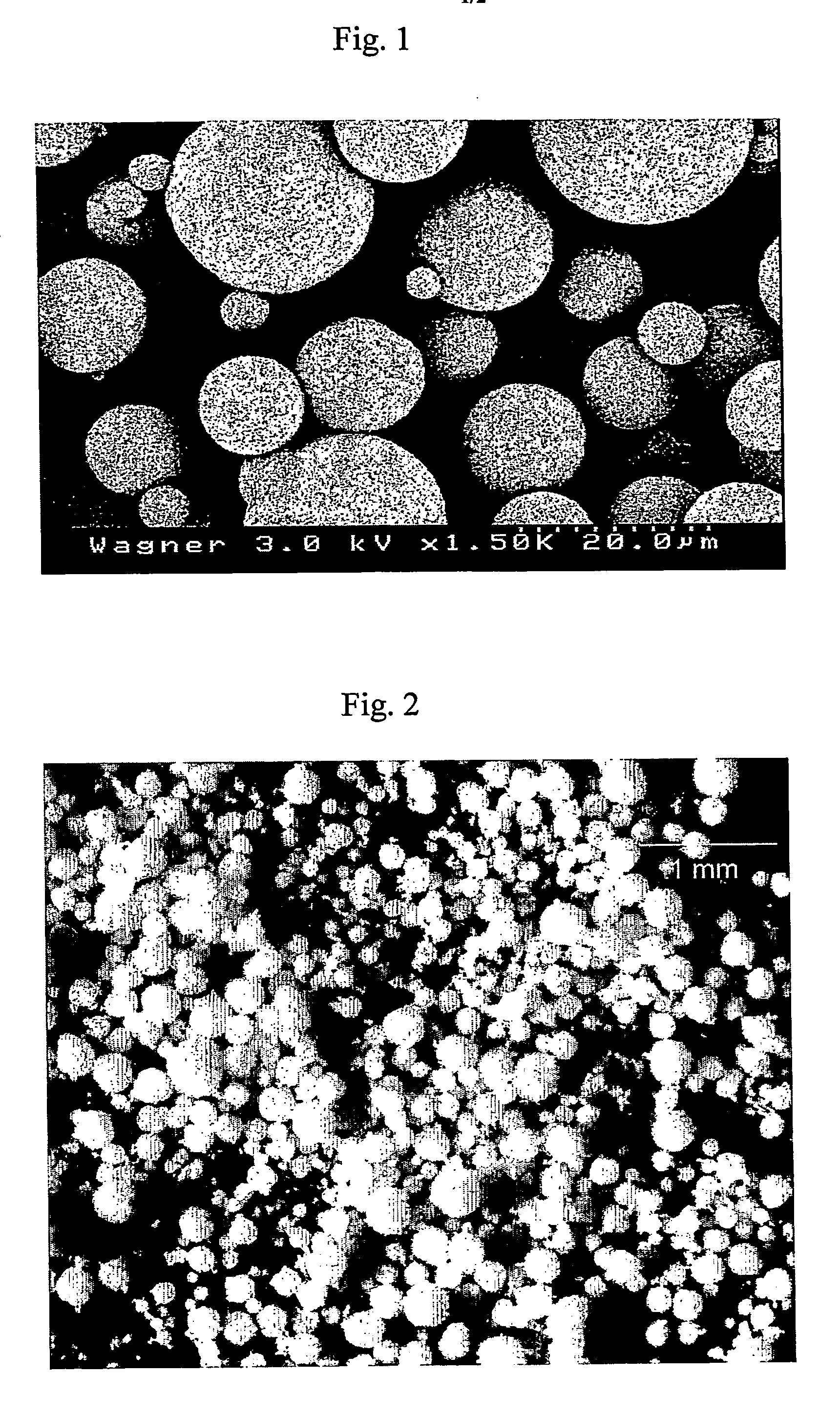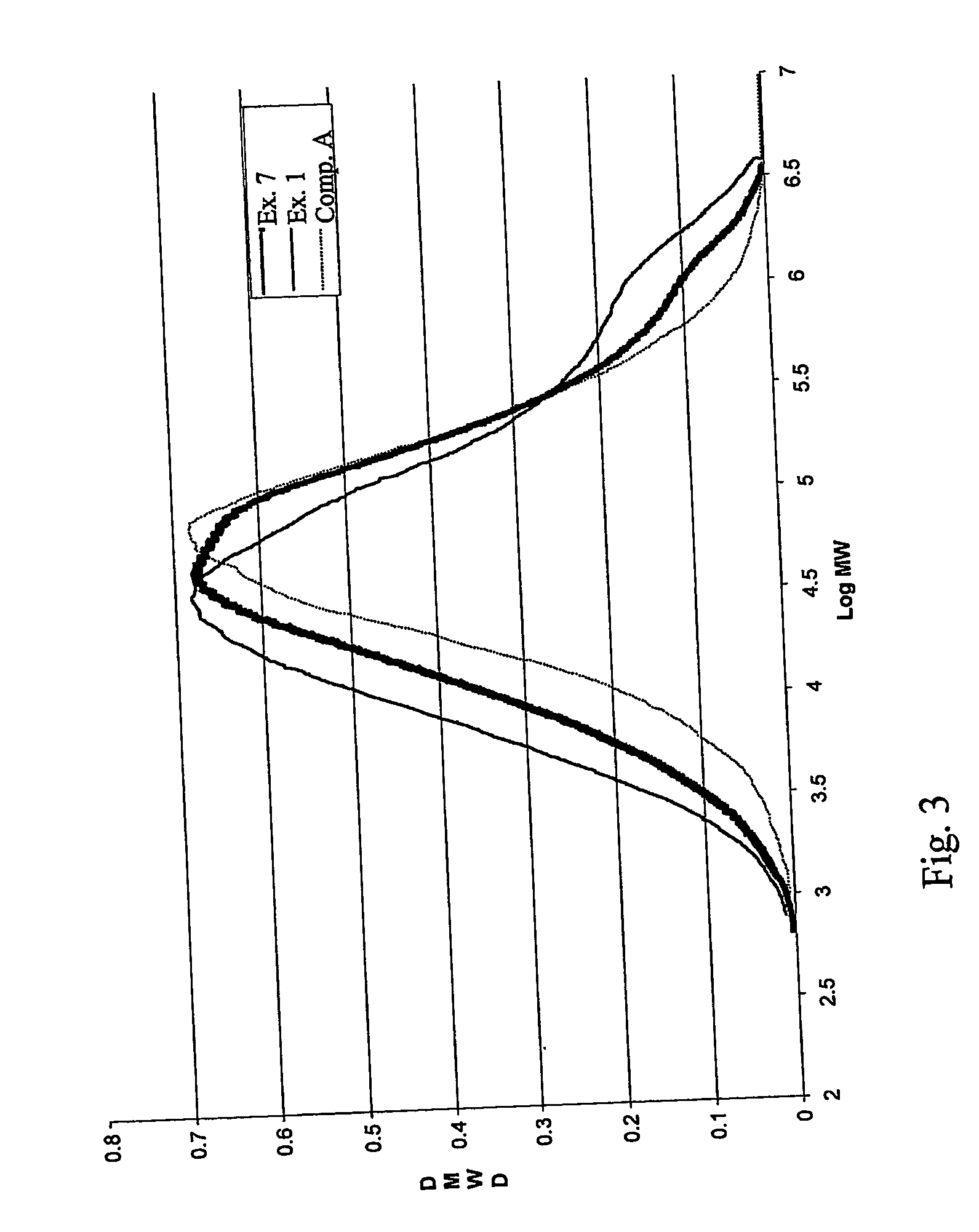Spray-dried, mixed metal ziegler catalyst compositions
a technology of mixed metals and catalyst compositions, which is applied in the direction of catalyst activation/preparation, physical/chemical process catalysts, chemical/physical processes, etc., can solve the problems of reducing affecting the product quality of the catalyst, etc., to achieve the effect of improving catalyst homogeneity and morphology, high product quality, and high product quality
- Summary
- Abstract
- Description
- Claims
- Application Information
AI Technical Summary
Benefits of technology
Problems solved by technology
Method used
Image
Examples
examples
[0047] The following examples are provided in order to further illustrate the invention and are not to be construed as limiting. The term “overnight”, if used, refers to a time of approximately 16-18 hours, “room temperature”, if used, refers to a temperature of about 20-25° C. All syntheses and manipulations of air-sensitive materials were carried out in an inert atmosphere (nitrogen or argon) glove box.
Preparation of Spray Dried Catalyst A Precursor (Molar Ratio Mg / Ti / Hf=3 / 1 / 2)
[0048] Magnesium dichloride (6.41 g), 4.40 g of TiCl3.⅓ AlCl3, and 13.2 g of HfCl4 are placed into an oven-dried, 500 ml, three-neck round bottom flask. Anhydrous ethanol (200 ml) is then added to the flask, the flask is placed in an oil bath set at 100° C., and the flask contents refluxed for 3 hours resulting in the formation of a clear, blue colored reaction mixture. The solution is cooled to room temperature. 8.92 g of fumed silica that has a silane surface treatment (Cab-O-Sil™ TS-610, available from...
examples 1-3
[0050] Within the confines of a dry-box, 10.0 g of spray dried precursor A are placed into an oven-dried, 500 ml, three-neck round bottom flask equipped with a stir bar. The sealed flask is then removed from the drybox, and fitted with a nitrogen line, condenser and an addition funnel. Hexane (100 ml) is added to make a slurry. Using the addition funnel while the flask is cooled in an ice bath, 2.5 (Ex. 1), 5 (Ex. 2) or 10 (Ex. 3) equivalents of a 25 percent hexane solution of ethylaluminum sesquichloride (EASC) are added dropwise to the flask resulting in formation of a dark brown composition accompanied by slight warming of the mixture (5° C.). The flask is placed in an oil bath set at 90° C., and the flask contents refluxed for 2 hours. Stirring is discontinued, the flask is removed from the oil bath, and the flask contents cooled to room temperature. The solid product is allowed to settle to the bottom of the flask, and the supernatant is removed by decantation, washed three tim...
examples 4-6
[0051] Precursor B (1.40 g, 0.75 mmole Ti) is placed into an oven-dried, 20 ml glass, crimp-top vial equipped with a stir bar. Mineral oil (4 ml) (Kaydol™ oil available from Witco Corporation) is added to the vial, and the vial is sealed. The vial is then removed from the dry-box and connected to a nitrogen line. EASC, 1.3 equivalents (Ex. 4), 3.4 equivalents (Ex. 5) or 5 equivalents (Ex. 6) is then slowly added to the vial. The vial is then placed in a 65° C. oil bath and heated for 2 hours. The vial is then removed from the oil bath, cooled to room temperature and stored under an inert atmosphere.
[0052] A 1 liter stirred autoclave reactor is charged with 500 ml hexane, 10 ml 1-hexene, and triisobutylaluminum (TiBA) in an amount sufficient to provide about 1000: 1 molar ratio based on Ti, and sufficient catalyst / mineral oil slurry to give a charge of from 0.5-1.0 micromoles of the catalysts prepared in Examples 1-6. The reactor temperature is raised to 60° ...
PUM
| Property | Measurement | Unit |
|---|---|---|
| molar ratio | aaaaa | aaaaa |
| molecular weight distribution | aaaaa | aaaaa |
| particle size | aaaaa | aaaaa |
Abstract
Description
Claims
Application Information
 Login to View More
Login to View More - R&D
- Intellectual Property
- Life Sciences
- Materials
- Tech Scout
- Unparalleled Data Quality
- Higher Quality Content
- 60% Fewer Hallucinations
Browse by: Latest US Patents, China's latest patents, Technical Efficacy Thesaurus, Application Domain, Technology Topic, Popular Technical Reports.
© 2025 PatSnap. All rights reserved.Legal|Privacy policy|Modern Slavery Act Transparency Statement|Sitemap|About US| Contact US: help@patsnap.com


